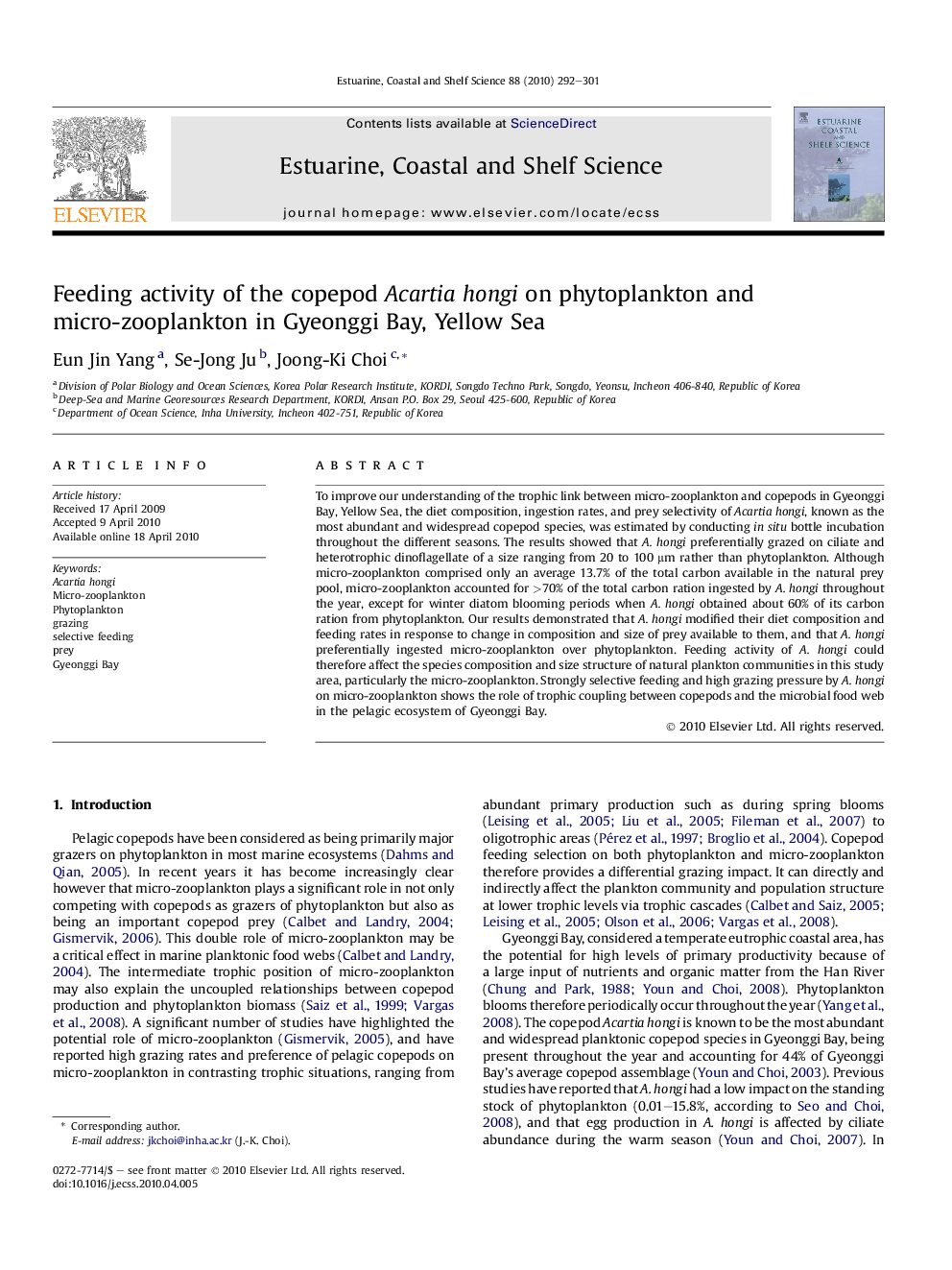| Article ID | Journal | Published Year | Pages | File Type |
|---|---|---|---|---|
| 4540952 | Estuarine, Coastal and Shelf Science | 2010 | 10 Pages |
To improve our understanding of the trophic link between micro-zooplankton and copepods in Gyeonggi Bay, Yellow Sea, the diet composition, ingestion rates, and prey selectivity of Acartia hongi, known as the most abundant and widespread copepod species, was estimated by conducting in situ bottle incubation throughout the different seasons. The results showed that A. hongi preferentially grazed on ciliate and heterotrophic dinoflagellate of a size ranging from 20 to 100 μm rather than phytoplankton. Although micro-zooplankton comprised only an average 13.7% of the total carbon available in the natural prey pool, micro-zooplankton accounted for >70% of the total carbon ration ingested by A. hongi throughout the year, except for winter diatom blooming periods when A. hongi obtained about 60% of its carbon ration from phytoplankton. Our results demonstrated that A. hongi modified their diet composition and feeding rates in response to change in composition and size of prey available to them, and that A. hongi preferentially ingested micro-zooplankton over phytoplankton. Feeding activity of A. hongi could therefore affect the species composition and size structure of natural plankton communities in this study area, particularly the micro-zooplankton. Strongly selective feeding and high grazing pressure by A. hongi on micro-zooplankton shows the role of trophic coupling between copepods and the microbial food web in the pelagic ecosystem of Gyeonggi Bay.
